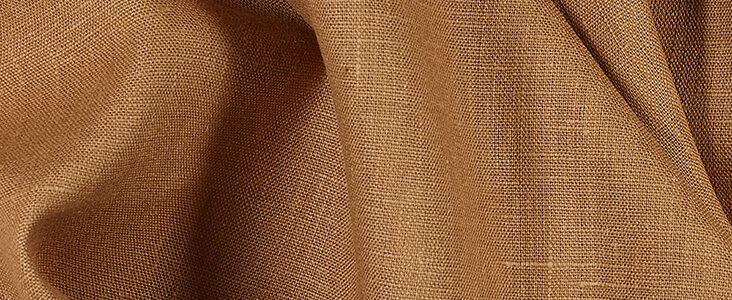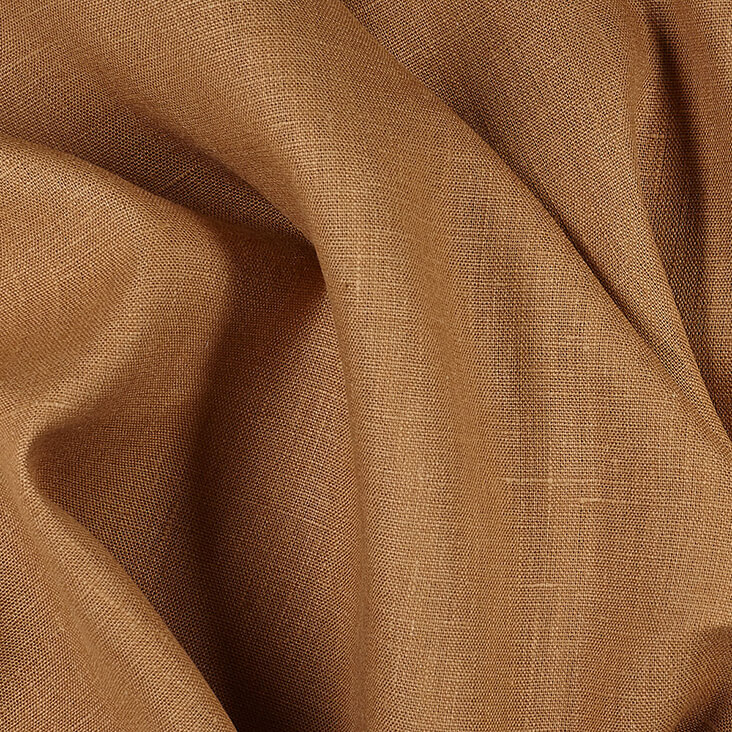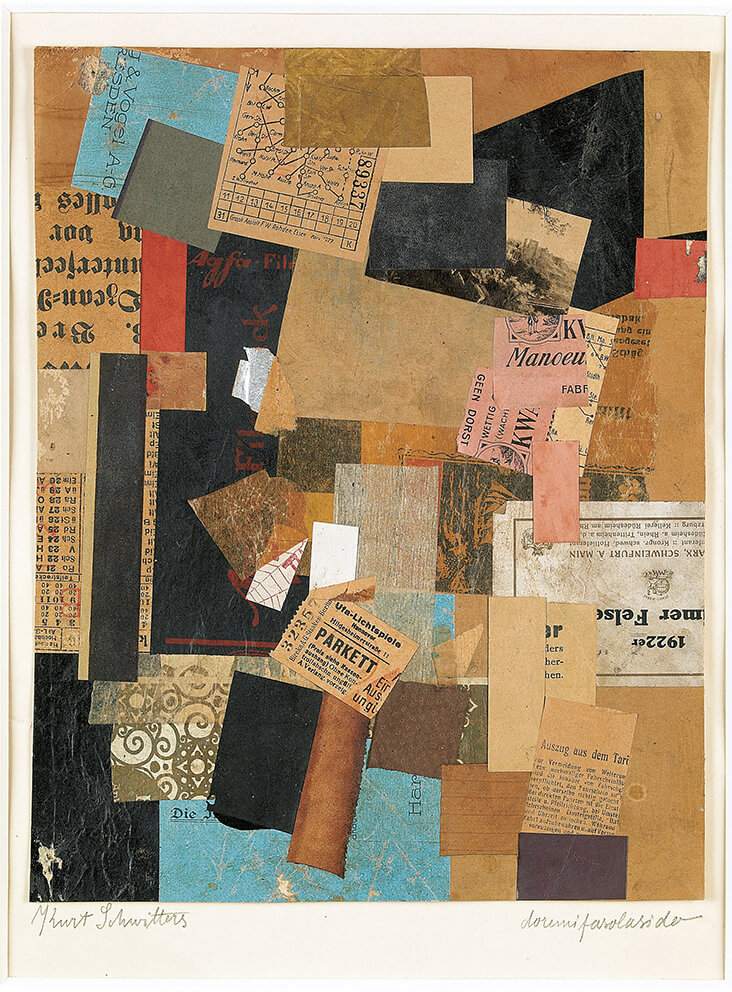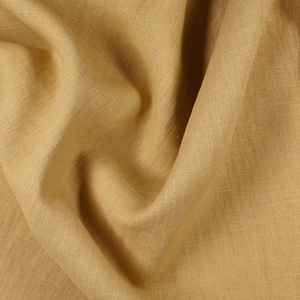FS Colour Series: Ginger Inspired by Kurt Schwitters’ Warm Spice
Torn scraps of colour and texture flit across Kurt Schwitters’ endlessly complex designs, pushing back and forth in a bid for attention. But uniting them is a love of caramel and golden browns, like that of GINGER Linen, which creates an overriding mood of warmth and familiarity. Made from the ephemera of his daily life in 1920s Germany, almost anything could be thrown into the mix, including old bus tickets, newspaper scraps, wallpaper swatches, and playing cards, transformed into prismatic arrangements of natural, near flesh tones that seem somehow inherently linked to the human experience. In this way his art became a great leveler, uniting ordinary matter with the aura and spirituality of art, an ethos that still has rippling reverberations today.
Born in Hannover in Germany in 1887, Kurt Schwitters was the only child of a secure, middle-class family. When he was 14 he began having epileptic fits, which dramatically shifted his way of seeing the world. He studied drawing at the Dresden Academy from 1909-1915, an extended period which allowed him to develop meticulous craftsmanship skills. But when war broke out in 1914, his attitude towards the social role of art changed and he became increasingly involved with the anti-war sentiments of Dada artists, including Hannah Hoch and Hans Arp.
It was 1918 when Schwitters first began making collages, assembled from the detritus of urban waste all around him. Like many Dada artists, nonsensical words and poetry were another strand of his practice, an apt metaphor for the pointlessness and excessive destruction of war-torn living. When Schwitters made a collage with the word “Merz” in it, cut out from a longer text reading Commerz und Privatbank, he quickly adopted the term to describe his new work and would hold on to it for the rest of his career. Using the word Merz to describe his chaotic practice and its inherent spirit of re-invention, which allowed him to build something new and progressive out of the rubble, he wrote, “everything had broken down and new things had to be made out of the fragments; and this is Merz.”
Schwitters also saw collage as an extension of painting, another tool which allowed him to play and experiment with colour harmonies, compositions, patterns and textures with greater freedom and possibility than paint and brushes. Made two years after the end of the war, Merz 19, 1920 is elemental and light, combining warm, spicy browns in broken or torn shards with the airiness of a pale blue, cloudy sky, like a glimmer of new hope appearing in the distance.
Merz Blauer Vogel (Blue Bird), 1922 is more fragmentary and shot through with dazzling strands of red and yellow, but stained patches coloured by caramel browns hold the composition together, forming tactile blooms that ripple in the light. In the 1920s, Schwitters began working on a series of room-sized abstract constructions in his home in Hannover, which he called Merzbau. The shift into three dimensions allowed him to bring a greater awareness of space and form back into his smaller work, as seen in the architecturally ordered Doremifasolasido, 1930. Sandstone shaded rectangles and squares seem to rest precariously on one another like the blocks and pillars of a worn-down temple, teetering somewhere between balance and collapse, while sky blue panels are a breath of sharp freshness.
In the later Opened by Customs, 1937–8, Schwitters reveals his mastery of the collage technique, as densely layered areas of rich complexity combine with painterly streaks and flat blocks in a closely toned melange. Colour is more restrained than ever as subtle, sandy browns jostle with close, warm tones of ginger, resin and brown sugar, cut through with shards of ice white, which make the whole scene pop with sparkling life.















































Leave a comment